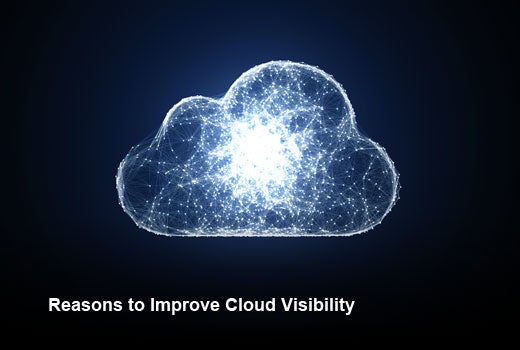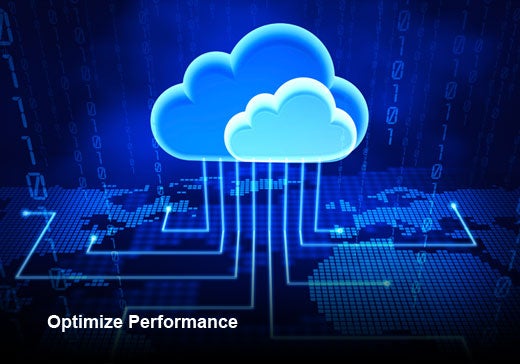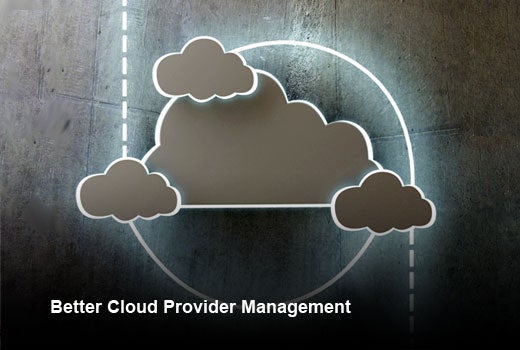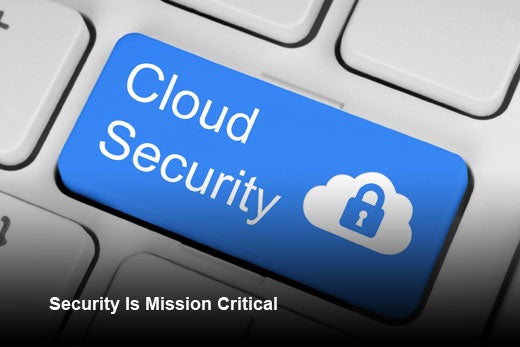A massive migration to the cloud has been underway for the better part of the past decade, but the number of enterprises with hybrid configurations may be reaching a tipping point. IDC research suggests that by the end of 2016, more than 65 percent of IT enterprises will have adopted a hybrid cloud configuration and spending on infrastructure for cloud environments will reach $38.2 billion. And it’s clear from Dyn’s proprietary research that every company in the Fortune 100 has a cloud asset. Hybrid cloud environments reduce costs, increase flexibility and scalability and greatly improve network performance. But IT executives need the right tools to monitor and control their cloud infrastructure to maximize these positive impacts and mitigate security threats.
In this slideshow, Gary Sloper, vice president of global solutions engineering at Dyn, has identified eight reasons for the enterprise to improve visibility and control into their global internet and cloud assets.
Reasons to Improve Cloud Visibility
Click through for eight reasons organizations need to improve visibility and control of their global internet and cloud assets, as identified by Gary Sloper, vice president of global solution engineering at Dyn.
Optimize Performance
Any business that generates revenues online is a global business and needs to consider the tools available to make the internet a competitive advantage. Knowing the real-time state of your public internet performance is critical in the highly competitive global business environment. Where are the internet latency issues? What is global availability and reachability like? How is the real-world performance of end users? Understanding your connections – through insights and having controls to improve performance — is the only way to optimize performance and mitigate risks in your network.
Slow is the new downtime. In fact, in 2015 Amazon calculated that a page load slowdown of just one second could cost $1.6 billion in sales each year. Most businesses are investing in performance tools within their enterprises, but they should also look outside their firewalls to understand how the internet affects each and every customer connection. Where does Amazon’s symbolic one-second delay come from? More often than not, it comes from internet performance.
Prevent an Outage
Outages occur upwards of 3,000 times every day on the global internet. And it is difficult for most companies to detect an internet connection failure without a way to measure between your customers and your assets.
System admins in the enterprise must understand how the larger internet affects the performance and availability of assets inside and outside the cloud. How is your cloud provider performing? Are all of their facilities reachable, or is a particular ISP in a certain city experiencing problems? By monitoring at that level of detail, IT teams can make more educated decisions that will impact slowdowns and prevent outages. This is also true with CDN access, availability and performance. As with all internet assets, CDN performance needs to be watched because it is constantly changing and varies depending on geography, content and internet conditions. Can you spot CDN failures and slowdowns today?
But awareness of path, cloud and CDN problems is only part of the challenge – companies must enable tools to mitigate against outages to ensure constant uptime. You may want to consider contracting multiple DNS providers to ensure uninterrupted connectivity to these services.
Better Cloud Provider Management
According to RightScale’s 2016 State of the Cloud Report, lack of expertise around cloud provider management is the number one reason why enterprises are slow to adopt a completely cloud-dependent infrastructure. Knowledge is power when it comes to any negotiation and IT admins managing cloud assets can use a better understanding of internet performance metrics to save money and improve services for their customers, partners and end users. Internet performance knowledge can also alert admins if their performance thresholds are not being met or if performance varies by time of day or location or if they’re being overcharged.
One often overlooked way to better manage cloud providers is through the Domain Name System (DNS), which becomes essential when companies want to change configurations with multiple clouds and/or CDNs and optimize performance for the end user.
Security Is Mission Critical
According to that same RightScale report, security is the second reason why enterprises are slow to adopt a completely cloud-dependent infrastructure. And enterprise security no longer stops at the walls of the data center — it needs to be a top priority across a company’s cloud-based assets.
Between the time a potential customer enters a domain and a page opens, a tremendous amount happens between the business connection and the end user — much of which transpires on the public cloud. It’s important to use the right tools to gain visibility and control into the public internet to ensure issues like BGP hijacking — which is on the rise — are discovered and resolved without your business missing a step (and certainly without a costly outage).
Better Manage Partner Ecosystem
GE has made major investments in its cloud infrastructure, recently indicating that it plans to migrate 9,000 applications to public IaaS over the next three years and reduce its data centers from more than 30 to the single digits. For any enterprise this would be a complex undertaking, but for a $117 billion company — with tens of thousands of apps, hundreds of thousands of servers and petabytes of storage and networks in hundreds of countries around the world — the transition is mammoth. And GE is certainly not alone in migrating significant assets via a hybrid configuration.
GE is likely using a variety of tools to help with the transition and tuning of its assets, helping it optimize route paths, negotiate cloud and CDN deals and ensure the best possible experience for its many partners. With complex, multinational and multi-region assets and partners to consider, having deep insight and control into the internet infrastructure is critical to managing costs and investments and optimizing performance.
Ensure Global Availability
Global companies need reachability and availability on a global scale. Enterprises need to ensure that the end-user experience is equal no matter where or when a customer accesses a website, app or content. It’s important to ask yourself: Can my services be seen from the internet and are my partners able to connect with my services?
Enterprises need to understand the constant state of the global internet not only in their largest markets, but in regions with fewer assets or customers. A company’s brand is based on a predictable, consistent experience, and this needs to translate via online and mobile. Sure-fire ways to ensure global availability include distributing hosting on multiple cloud vendor sites, using secondary DNS, and implementing tools that monitor your global network to determine load levels.
Avoid User Error
External security threats like DDoS make all of the headlines, but man-made internal errors are a significant cause of network hiccups and outages. New code deployments or routine maintenance don’t always go well and can have externally visible effects, even with best practices in place and thorough planning and testing in play. Hardware failures or transit provider outages are also significant internal issues that can lead to major disruptions.
But if you hvae performance tools in place, your customers don’t need to notice. Performance tools can monitor the health of your assets and make dynamic changes in real time to ensure that customers are directed to website instances that are up and ready to take their traffic if outages occur. Deploying multiple instances, ideally distributed geographically and spread among multiple vendors, is easier than ever before.
Scale with Confidence
As enterprises continue to migrate more assets to the cloud, shift assets by need or by region and manage assets based on cost and performance, it becomes imperative to have a toolkit that gives insights and control into the public internet. Using an advanced DNS-based traffic management solution with geo-location or an internet performance management tool can provide insight and control so that scaling is done intelligently to maximize performance and optimize spend.
Finally, the shift many clients are undertaking by replacing private vrf MPLS WANs with Public IPSEC WANs is occurring, but how do you deploy it with confidence? Simply performing traceroutes over a short time does not truly indicate or predict if you can scale in a public WAN. Using performance management tools to manage these decisions prior to contract signature and to optimize your network post-implementation allows clients to maximize efficiency, which is critical when departing off a private MPLS network with fast LSPs.











